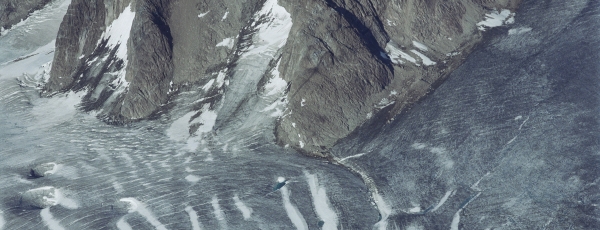
Project Pressure’s recent expedition to Eastern Greenland gave us an aerial view of one of the most insidious problems in the fight against climate change: darkening ice.
As a look through our photographic gallery reveals, glaciers are often naturally dirtied and darkened, especially during the summer months when no new snow accumulates– but over time, small manmade particles can also land and make them darker. The result is that less sunlight is reflected, more solar energy is absorbed and more melting takes place: a dangerous feedback loop that could become a key tipping point as the world warms.
The problem is especially pronounced in the Arctic and in the Himalayas, where a combination of emissions from transport, cooking stoves, wildfires, land clearance, coal power plants other sources drifts north over the ice and snow. Though tiny, these black carbon particles are collectively a serious problem – reducing the reflectivity (or ‘albedo’) of vast white surfaces and so causing significant melting.
The good news is that black carbon also presents a serious opportunity to reduce overall warming and improve people’s health. Firstly, it’s responsible for as much as 25% of observed global warming* – so tackling such emissions could bring serious results. Secondly, it doesn’t last long in the atmosphere (generally settling after just a few weeks) so the effects of a reduction would soon kick in. Thirdly, reducing these toxic pollutants would have huge benefits for human health, meaning it’s not just an environmental issue.
In the Western world, diesel emissions have been sharply reduced – benefitting both people and the planet. As shipping increases with the retreat of Arctic ice, limiting these dark emissions will remain a challenge – but one with serious potential to limit climate change.
Text by Chris Hatherill for Project Pressure
* J. Hansen, et al., Efficacy of Climate Forcing, 110 J. GEOPHYS. RES. D18104, 1 (2005), available at http://pubs.giss.nasa.gov/docs/2005/2005_Hansen_etal_2.pdf.
